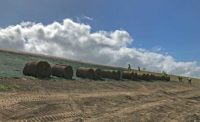

Innovative dam and levee design construction for sustainable water management is the theme of the United States Society of Dams 32nd annual meeting and conference, which will be held in New Orleans April 23-27.
USSD is planning to “capitalize on the watershed event of Hurricane Katrina” and the subsequent levee failures in 2005, as well as riverine levee failures along the Mississippi, Red and Missouri rivers in the 2011 historic flood season, to increase emphasis on levees at this year’s conference, says Paul Booth, associate vice president and dam safety manager for ARCADIS-US. Booth is also on the USSD Conference planning committee and an instrumentation committee. "As a nation, our efforts have been much less concentrated on levees than dams, in many ways, because of the part-time role levees play." Whereas dams hold water full-time, levees are typically only called to action when flooding occurs, Booth says.
USSD has a technical committee on levees and has focused on them at previous annual meetings, says Larry Stephens, executive director since 1985. However, New Orleans was particularly attractive as a host city because of its rich combination of levees as well as other, interesting water control projects, Stephens says. As part of the conference, the U.S. Army Corps of Engineers will host tours of some key structures in the Greater New Orleans Hurricane and Storm Damage Risk Reduction System.
Highlights of the conference schedule include: the opening plenary on sustainable water management in dam and levee construction; a presentation by Tennessee Valley Authority’s Janet C. Herrin on managing TVA’s integrated river and power system; sessions on environmental issues; and monitoring and instrumentation of dams and levees.
"The technologies that are used in dams are pretty well developed in terms of what we are doing these days in the industry," Booth says. "That technology needs to be transported more over to levees." Problems with monitoring levees include funding—because they are usually operated by local entities and with cost sharing—and instrumentation access, because of remote locations. "We’ve got the brains we’re using on dams, and let’s take that and apply to levees to make them smarter," Booth says.
USSD anticipates about 400 attendees, 60 exhibitors and 100 technical presentations, Stephens says.




Post a comment to this article
Report Abusive Comment